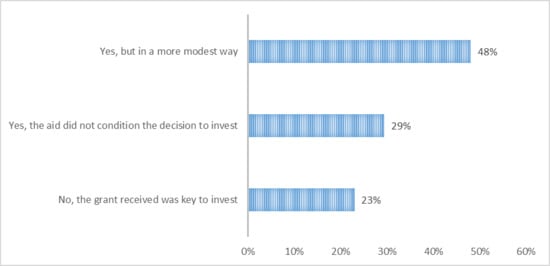Intangibles of Rural Development. The Case Study of La Vera (Extremadura, Spain)
Abstract
:1. Rural Development Programs as Study Area: Context, Novelty and Objectives of the Research
2. Literature Review
3. Research Scope: La Vera as a Case Study
- (a)
- It is a territory with clearly defined borders: located in the northeast of the province of Caceres, bordered to the north by the Sierra de Gredos and Jerte river valley, to the east by the provinces of Avila and Toledo, to the south by the river Tietar, and to the west by the region of Plasencia. With a total area of 885.98 km2 and a total of 19 municipalities, La Vera allows to easily delimit the borders of the case under study (Figure 1). The fact that La Vera is located in Extremadura (Spain) is not insignificant, since authors such as González [77] consider this region to be an ideal area in which to analyze the effects of Rural Development Programs on the territory.
- (b)
- La Vera is an excellent example in which to study various aspects related to the implementation of the Rural Development Programs. This is due to the following points:
- (b1)
- The existence of valuable resources with great potential for the development of rural tourism, and therefore, economic diversification. These resources include:
- Natural and landscape resources inherent to the Sierra de Gredos. Depending on their altitude, Gredos possesses emblematic foothills suitable for practicing mountain sports. Their hydrographic network, composed of multiple gorges with pure and crystalline waters, are a major tourist resource in the summer season. Also, the Sierra de Gredos influences the climate of the area creating a microclimate characterized by mild temperatures and abundant humidity that generates a rich landscape.
- Remarkable cultural resources including: (1) festivals declared of regional tourist interest such as Los Empalaos and El Peropalo; (2) a huge religious and cultural heritage of which the Monastery of Yuste is a good example; and (3) an architectural heritage whose best exponents are the five municipalities declared Historic–Artistic Ensembles.
- (b2)
- There is a long tradition of producing products very characteristic of the area, of high quality, and based on the use of the endogenous resources of the territory. Some of these products are paprika, tobacco, and goat’s cheese. It should be remembered that one of the strategies by which Rural Development Programs seek to achieve economic diversification is ’agricultural development and marketing’ measures, which aims to create and retain the highest possible added value on the basis of local production.
4. Research Methodology
- Analysis of the general documentation of the Program: In the first phase of the fieldwork, at the LAG headquarters, a multitude of documents related to the implementation of the program were consulted. This made it possible to configure the “universe” of research, to study the projects implemented under the program, and to locate information that would subsequently provide access to the promoters.
- Conducting interviews as the main source of information. With respect to the interview model, semi-structured interviews were considered to be the most appropriate model: they were not a closed instrument (unable to incorporate any assessments of interest made by the interviewees), and at the same time, their semi-open nature allowed for the joint analysis and processing of the information obtained. Rural Development Programs have two types of measures: productive and unproductive. Private promoters receive their subsidies from the productive measures. It is therefore on these that the research is focused. The temporal scope of the analysis covers the two editions of the Proder Program. Given the large number of private projects implemented under the productive measures during this period, it was necessary to select a sample of them. To this end, three criteria were applied: (a) that the impulse and the main source of financing were private; (b) that Proder’s contribution amounted to a minimum of 12,000 euros; and (c) that this subsidy had a certain relevance in the financing of the project, representing at least 20% of the total investment. Table 1 shows the investments represented by the projects included in the sample and the total resources committed in each of the productive measures.
- 3.
- On-site assessment of each of the projects in the sample: It was decided to conduct the interviews at the investment site. These trips provided direct contact with the key people in the research and made it possible to understand, first-hand, the objective of the investments, their viability, etc.
- 4.
- Triangulation of results: In the final phase of the fieldwork, an attempt was made to correct the possible biases that the interviewees could have incurred. Among these possible biases, it is worth highlighting the influence that the time elapsed between Proder Program execution and the conduct of the research could have had in the promoters’ valuations. With cited objective, once the first conclusions were obtained from the interviews, they were “triangulated” by holding working meetings with those responsible for the technical implementation of the program. The purpose of these meetings was to contrast the extent to which the initial results of the research coincided with the opinion of those who, from a technical point of view, had greater knowledge of the program. These meetings were repeated with the final conclusions of the fieldwork.
5. Results and Discussion
5.1. Suitability of the Management System
5.2. Multi-sectorial Approach
5.3. Bottom-up Approach
5.4. Contribution of These Programs to Other Aspects of Territorial Revaluation
6. Conclusions
Author Contributions
Funding
Conflicts of Interest
References
- European Commission. Guidelines for European Agriculture; COM (81) 608 Final; Office for Official Publications of the European Communities: Luxembourg, 1981. [Google Scholar]
- European Commission. Perspectives for the Common Agricultural Policy; The Green Paper of the Commission; Green Europe News Flash 33, COM (85) 333; Communication of the Commission to the Council and the Parliament: Brussels, Belgium, 1985. [Google Scholar]
- European Commission. The Future of Rural Society; COM (88) 501; Bulletin of the European Communities, Supplement 4/88; Office for Official Publications of the European Communities: Brussels, Belgium, 1988. [Google Scholar]
- European Commission. Comunicación Por la que se Fijan Las Directrices de Unas Subvenciones Globales Integradas para Las que se Invita a Los Estados Miembros a Presentar Propuestas que Respondan a una Iniciativa Comunitaria de Desarrollo Rural (91/C 73/14); Diario Oficial de las Comunidades Europeas, no.73/33; Office for Official Publications of the European Communities: Luxembourg, 1991. [Google Scholar]
- European Commission. Communication Setting out Guidelines for Global Grants to Integrated Operational Programs, for Which States Are Requested to Submit Applications for Assistance within a Community Initiative for Rural Development (94/C 180/12); Official Journal of the European Communities; Office for Official Publications of the European Communities: Luxembourg, 1994. [Google Scholar]
- European Commission. Communication to the Member States, Laying Down Guidelines for the Community Initiative for Rural Development (Leader +) (2000/C 139/05); Official Journal of the European Communities: Office for Official Publications of the European Communities: Luxembourg, 2000. [Google Scholar]
- Asociación Europea de Información sobre el Desarrollo Local (AEDL). La Financiación Local en Los Territorios Rurales; Cuaderno no.9; Observatorio Europeo Leader: Bruselas, Bélgica, 2000. [Google Scholar]
- Consejo Europeo. Reglamento (CE) no.1290/2005, Sobre la Financiación de la Política Agrícola Común; Diario Oficial de la UE L/209; Oficina de Publicaciones de la Unión Europea: Luxemburgo, 2005. [Google Scholar]
- Consejo Europeo. Reglamento (CE) no.1698/2005, Relativo a la ayuda al Desarrollo Rural Través del Fondo Europeo Agrícola de Desarrollo Rural (FEADER); Diario Oficial de la UE L/277; Oficina de Publicaciones de la Unión Europea: Luxemburgo, 2005. [Google Scholar]
- Comisión Europea. Reglamento (CE) no.1974/2006, por el que se Establecen Disposiciones de Aplicación del Reglamento (CE) no.1698/2005, Relativo a la Ayuda al Desarrollo Rural a Través del Fondo Europeo Agrícola de Desarrollo Rural (FEADER); Diario Oficial de la Unión Europea L/368; Oficina de Publicaciones de la Unión Europea: Luxemburgo, 2006. [Google Scholar]
- Ministerio de Agricultura Pesca y Alimentación. Programa Nacional Proder I; MAPA: Madrid, España, 1996.
- Ministerio de Agricultura Pesca y Alimentación. Real Decreto 2/2002, de 11 de Enero, Por el que se Regula la Aplicación de la Iniciativa Comunitaria “Leader Plus” y Los Programas Operativos Integrados y en Los Programas de Desarrollo Rural (PRODER); BOE, no.11, de 12 de enero de 2002, MAPA: Madrid, España, 2002. [Google Scholar]
- Asociación Europea de Información sobre el Desarrollo Local (AEDL). Evaluar el Valor Añadido del Enfoque Leader; Cuaderno no.4; Observatorio Europeo Leader: Bruselas, Bélgica, 1999. [Google Scholar]
- Esparcia, J.; Noguera, J. Reflexiones en torno al territorio y al desarrollo rural. In El Desarrollo Rural en la Agenda 2000; Ramos, E., Ed.; MAPA: Madrid, España, 1999; pp. 9–44. [Google Scholar]
- Guibertau, A. Fortalezas y debilidades del modelo de desarrollo rural por los actores locales. In Nuevos Horizontes en el Desarrollo Rural; Márquez, D., Ed.; AKAL: Madrid, España, 2002; pp. 87–104. [Google Scholar]
- Shahab, S.; Clinch, J.P.; O′Neill, E. Impact-based planning evaluation: Advancing normative criteria for policy analysis. Environ. Plannig B Urban Anal. City Sci. 2019, 46, 534–550. [Google Scholar] [CrossRef]
- Guyadeen, D.; Seasons, M. Plan Evaluation: Challenges and Directions for Future Research. Plan. Pract. Res. 2016, 31, 215–228. [Google Scholar] [CrossRef]
- Oliveira, V.; Pinho, P. Bridging the gap between planning evaluation and programme evaluation: The contribution of the PPR methodology. Evaluation 2011, 17, 293–307. [Google Scholar] [CrossRef]
- Esparcia, J. Las políticas de desarrollo rural: Evaluación de resultados y debate en torno a sus orientaciones futuras. In El Mundo Rural en la Era de la Globalización: Incertidumbres y Potencialidades; García, F., Ed.; Ministerio de Agricultura, Pesca y Alimentación: Madrid, España, 2001; pp. 267–309. [Google Scholar]
- Delgado, M.T.; Ramos, E.; Gallardo, R.; Ramos, F. De las nuevas tendencias en la evaluación a su aplicación en las iniciativas europeas de desarrollo rural. In El Desarrollo Rural en la Agenda 2000; Ramos, E., Ed.; Ministerio de Agricultura, Pesca y Alimentación: Madrid, España, 1999; pp. 323–344. [Google Scholar]
- Delgado, C.; De la Fuente, M.T. Las estrategias de desarrollo rural: Una valoración del PRODER en Cantabria. In Actas del X Coloquio de Geografía Rural; Asociación de Geógrafos Españoles, Grupo de Geografía Rural: Ciudad Real, España, 2000; pp. 623–634. [Google Scholar]
- Vargas, M.; Mondéjar, J.A. Análisis de la inversión de los Fondos Europeos para el Desarrollo rural en Castilla-La Mancha. Rev. Económica Castilla Mancha 2006, 9, 189–238. [Google Scholar]
- Alario, M.; Baraja, E. Políticas públicas de desarrollo rural en Castilla y León: ¿Sostenibilidad consciente o falta de opciones? LEADER II. Boletín Asoc. Geógrafos Españoles 2006, 41, 267–293. [Google Scholar]
- Ruíz, E.; Frutos, L.M.; Climent, E. La iniciativa comunitaria LEADER II y el desarrollo rural: El caso de Aragón. Geographicalia 2000, 38, 71–84. [Google Scholar]
- Cejudo, E.; Navarro, F.A. La inversión en los programas de desarrollo rural. Su reparto territorial en la provincia de Granada. An. Geogr. Univ. Complut. 2009, 29, 37–64. [Google Scholar]
- Nieto, A.; Cárdenas, G. The Rural Development Policy in Extremadura (SW Spain): Spatial Location Analysis of Leader Projects. ISPRS Int. J. Geo Inf. 2018, 7, 76. [Google Scholar] [CrossRef] [Green Version]
- Mejías, F.; Dolores, C. Desarrollo en el Medio Rural: 101 Proyectos Singulares de Los Grupos de Acción Local de Extremadura: 1995–2006; Red Extremeña de Desarrollo Rural: Badajoz, España, 2007. [Google Scholar]
- Nieto, A.; Cárdenas, G.; Costa, L.M. Principal Component Analysis of the LEADER Approach (2007–2013) in South Western Europe (Extremadura and Alentejo). Sustainability 2019, 11, 4034. [Google Scholar] [CrossRef] [Green Version]
- Carvalho, P.; Fernandez, J.L. Iniciativas de desenvolvimiento local no espaço rural portugués. In Território, Inovaçao e Trajectorias de Desenvolvimiento; Caetano, L., Ed.; Centro de Estudios Geográficos da Fluc: Coimbra, Portugal, 2001; pp. 241–272. [Google Scholar]
- Candela, A.R.; García, M.M.; Such, M.P. La potenciación del turismo rural a través del programa LEADER: La Montaña de Alicante. Investig. Geográficas 1995, 14, 77–98. [Google Scholar] [CrossRef]
- Hernández, M.; Moltó, E.A.; Rico, A.M. Las actividades turístico-residenciales en las montañas valencianas. Eria 2008, 75, 77–97. [Google Scholar]
- García, R. Turismo y desarrollo rural en la comarca del Noroeste de la región de Murcia: Los programas europeos LEADER. Cuad. Tur. 2011, 27, 419–435. [Google Scholar]
- Pérez, M.; López, E. La contribución del turismo a la diversificación de actividades en un espacio rural periférico. Análisis del impacto de la iniciativa LEADER en Galicia. Estud. Agrosoc. Pesq. 2005, 206, 111–135. [Google Scholar]
- Toledano, N.; Gessa, A. El turismo rural en la provincia de Huelva. Un análisis de las nuevas iniciativas creadas al amparo de los programas Leader II y Proder. Rev. Desarro. Rural. Coop. Agrar. 2002, 6, 107–122. [Google Scholar]
- Márquez, D.; Foronda, C.; Galindo, L.; García, A. Eficacia y eficiencia de Leader II en Andalucía. Aproximación a un índice-resultado en materia de turismo rural. Geographicalia 2005, 47, 137–142. [Google Scholar]
- Nieto, A.; Cárdenas, G. 25 años de políticas europeas en Extremadura: Turismo rural y método Leader. Cuad. Tur. 2017, 39, 389–416. [Google Scholar] [CrossRef] [Green Version]
- Mondéjar, J.A.; Mondéjar, J.; Vargas, M. Análisis del turismo cultural en Castilla-La Mancha (España). El impacto de los programas europeos de desarrollo rural LEADER y PRODER. Estud. Perspect. Tur. 2008, 17, 359–370. [Google Scholar]
- Pillet, F. Del turismo rural a la plurifuncionalidad en los territorios LEADER y PRODER de Castilla-La Mancha. In Turismo Rural y Desarrollo Local; Cebrián, F., Ed.; Universidad de Castilla-La Mancha: Cuenca, España, 2008; pp. 187–198. [Google Scholar]
- García, M.; De la Calle, M. Turismo en el medio rural: Conformación y evaluación de un sector productivo en plena transformación. El caso del Valle del Tiétar (Ávila). Cuad. Tur. 2006, 17, 75–101. [Google Scholar]
- Marques, H. Searching for complementarities between agriculture and tourism: The demarcated Wine-producing regions of northern Portugal. Tour. Econ. 2006, 12, 147–155. [Google Scholar] [CrossRef]
- Gatti, S.; Incerti, F.; Ravagli, M. Wine and tourism: New perspectives for vineyard areas in Emilia-Romagna. Cah. Econ. Sociol. Rural. 2002, 62, 97–117. [Google Scholar]
- Iakovidou, O.; Koutsouris, A.; Partalidou, M. The development of rural tourism in Greece, through the initiative Leader II: The case of northern and central Chalkidiki. Mediterr. J. Econ. Agric. Environ. 2002, 4, 32–38. [Google Scholar]
- Varvaressos, S.; Soteriadis, M. Rural tourism’s planning into the framework of European initiative LEADER Plus. Arch. Econ. Hist. 2002, 14, 191–213. [Google Scholar]
- Cebrián, A.; García, R. El Modelo LEADER, base del ordenamiento rural en el Unión Europea. Ágora 2008, 14, 22–48. [Google Scholar]
- Pérez Rubio, J.A. Los Intangibles en el Desarrollo Rural; Universidad de Extremadura: Cáceres, España, 2007. [Google Scholar]
- Saz-Gil, M.I.; Gómez-Quintero, J.D. Una aproximación a la cuantificación del capital social: Una variable relevante en el desarrollo de la provincia de Teruel, España. EURE 2015, 41, 29–51. [Google Scholar] [CrossRef] [Green Version]
- Esparcia, J.; Escribano, J.; Serrano, J. Una aproximación al enfoque del capital social y a su contribución al estudio de los procesos de desarrollo local. Investig. Reg. 2016, 34, 49–71. [Google Scholar]
- Moyano, E. Capital social, gobernanza y desarrollo en áreas rurales. Ambienta 2009, 88, 112–126. [Google Scholar]
- Moyano, E. El concepto de capital social y su utilidad para el análisis de las dinámicas del desarrollo. Rev. Fom. Soc. 2001, 56, 35–63. [Google Scholar]
- Moyano, E. Capital social y acción colectiva en el sector agrario. Rev. Española Sociol. 2008, 10, 15–37. [Google Scholar]
- Buciega, A. Capital Social en el Marco de Los Grupos para el Desarrollo Rural Leader: Análisis de Casos en la Provincia de Valencia; Universitat de València, Instituto Interuniversitario de Desarrollo Local: Valencia, España, 2009. [Google Scholar]
- Esparcia, J.; Noguera, J.; Pitarch, M.D. LEADER en España: Desarrollo rural, poder, legitimación aprendizaje y nuevas estructuras. Doc. Anal. Geogr. 2000, 37, 95–113. [Google Scholar]
- Alberdi, J.C. El medio rural en la agenda empresarial: La difícil tarea de hacer partícipe a la empresa en el desarrollo rural. Investig. Geográficas 2008, 45, 63–91. [Google Scholar] [CrossRef] [Green Version]
- Garrido, F.; Moyano, E. Capital social y desarrollo en zonas rurales: Un análisis de los programas Leader II y Proder en Andalucía. Rev. Int. Sociol. 2002, 60, 67–96. [Google Scholar] [CrossRef] [Green Version]
- Navarro, F.; Cejudo, E.; Maroto, J.C. Reflexiones en torno a la participación en el desarrollo rural. ¿Reparto social o reforzamiento del poder? LEADER y PRODER en el sur de España. EURE 2014, 40, 203–224. [Google Scholar] [CrossRef]
- Navarro, F.A.; Woods, M.; Cejudo, E. The LEADER Initiative has been a Victim of Its Own Success. The Decline of the Bottom-Up Approach in Rural Development Programmes. The Cases of Wales and Andalusia. Sociol. Rural. 2016, 56, 270–288. [Google Scholar] [CrossRef]
- Osti, G. LEADER and Partnerships: The Case of Italy. Sociol. Rural. 2000, 40, 172–180. [Google Scholar] [CrossRef]
- Lukic, A.; Obad, O. New Actors in Rural Development—The LEADER Approach and Projectification in Rural Croatia. Sociol. Space 2016, 1, 71–90. [Google Scholar]
- Chmieliński, P. On community involevement in rural development—A case of Leader Programme in Poland. Econ. Sociol. 2011, 4, 120–128. [Google Scholar] [CrossRef] [Green Version]
- Marquardt, D.; Möllers, J.; Buchenrieder, G. Social networks and rural development: LEADER in Romania. Sociol. Rural. 2012, 52, 398–431. [Google Scholar] [CrossRef]
- Quaranta, G.; Citro, E.; Salvia, R. Economic and Social Sustainable Synergies to Promote Innovations in Rural Tourism and Local Development. Sustainability 2016, 8, 668. [Google Scholar] [CrossRef] [Green Version]
- Salvia, R.; Quaranta, G. Place-based rural development and resilence: A lesson from a small community. Sustainability 2017, 9, 889. [Google Scholar] [CrossRef] [Green Version]
- Chevalier, P.; Mačiulyté, J.; Razafimahefa, L.; Dedeire, M. The Leader Programme as a model of institutional transfer: Learning from its local implementation in France and Lithuania. Eur. Countrys. 2017, 2, 317–341. [Google Scholar] [CrossRef] [Green Version]
- Chevalier, P.; Dedeire, M. Application du programme leader selon les principes de base du développement local. Econ. Rural. 2014, 342, 9–25. [Google Scholar] [CrossRef] [Green Version]
- Bruckmeier, K. Leader in Germany and the discourse of autonomous regional development. Sociol. Rural. 2002, 40, 219–227. [Google Scholar] [CrossRef]
- Shucksmith, M. Endogenous development, social capital, and social inclusion: Perspectives from Leader in the UK. Sociol. Rural. 2002, 40, 208–218. [Google Scholar] [CrossRef]
- Konečný, O. The Leader Approach across the European Union: One method of rural development, many forms of implementation. Eur. Countrys. 2019, 11, 1–16. [Google Scholar] [CrossRef]
- Muresan, I.C.; Oroian, C.; Harun, R.; Arion, F.; Porutiu, A.; Chiciudean, G.; Todea, A.; Lile, R. Local Residents Attitude toward Sustainable Rural Tourism Development. Sustainability 2016, 8, 100. [Google Scholar] [CrossRef] [Green Version]
- Muresan, I.C.; Harun, R.; Arion, F.; Oroian, C.; Dumitras, D.; Mihai, V.; Ilea, M.; Chiciudean, D.; Gliga, I.; Chiciudean, G. Residents´ perception of destination quality: Key factors for sustainable rural development. Sustainability 2019, 11, 2594. [Google Scholar] [CrossRef] [Green Version]
- Abdollahzadeh, G.; Sharifzadeh, A. Rural residents´perceptions toward tourism development: A study from Iran. Int. J. Tour. Res. 2014, 16, 126–136. [Google Scholar] [CrossRef]
- Harun, R.; Chiciudean, G.; Sirwan, K.; Arion, F.; Muresan, I. Attitudes and perceptions of the local community towards sustainable tourism development in Kurdistan Regional Goberment. Sustainability 2018, 10, 2991. [Google Scholar] [CrossRef] [Green Version]
- Coller, X. Estudio de Casos. Colección Cuadernos Metodológicos; CIS: Madrid, España, 2000. [Google Scholar]
- Durán, M. Estudio de Caso en investigación cualitativa. Rev. Adm. 2012, 3, 121–134. [Google Scholar] [CrossRef] [Green Version]
- Jiménez, V.; Comet, C. Los Estudios de Caso como enfoque metodológico. Rev. Investig. Cienc. Soc. Humanid. 2016, 3, 1–11. [Google Scholar]
- Yin, R. Case Study Research and Applications: Design and Methods; SAGE: Los Angeles, CA, USA, 2018. [Google Scholar]
- Yin, R. Qualitative Research from Start to Finish; The Guilford Press: New York, NY, USA, 2016. [Google Scholar]
- González, J. (Ed.) El método Leader: Un instrumento territorial para un desarrollo rural sostenible. El caso de Extremadura. In Desarrollo Rural de Base Territorial: Extremadura (España); MAPA y Consejería de Desarrollo Rural de la Junta de Extremadura: Badajoz, España, 2006; pp. 13–90. [Google Scholar]
- Cheevapattananuwong, P.; Baldwin, C.; Lathouras, A.; Ike, N. Social Capital in Community Organizing for Land Protection and Food Security. Land 2020, 9, 69. [Google Scholar] [CrossRef] [Green Version]
- Vecchio, Y.; Iddrisu, A.; Adinolfi, F.; De Rosa, M. Geographical Indication to Build up Resilient Rural Economies: A Case Study from Ghana. Sustainability 2020, 12, 2052. [Google Scholar] [CrossRef] [Green Version]
- Vukomanovic, J.; Skrip, M.; Meentemeyer, R. Making It Spatial Makes It Personal: Engaging Stakeholders with Geospatial Participatory Modeling. Land 2019, 8, 38. [Google Scholar] [CrossRef] [Green Version]
- Castro-Pardo, M.; Pérez-Rodríguez, F.; Martín-Martín, J.; Azevedo, J. Planning for Democracy in Protected Rural Areas: Application of a Voting Method in a Spanish-Portuguese Reserve. Land 2019, 8, 145. [Google Scholar] [CrossRef] [Green Version]
- Brankov, J.; Jojić, T.; Milanović, A.; Petrović, M.; Tretiakova, T. Resident’s Perceptions of Tourism Impact on Community in National Parks in Serbia. Eur. Countrys. 2019, 11, 124–142. [Google Scholar] [CrossRef] [Green Version]
- Castellano-Álvarez, F.J.; Del Río Rama, M.C.; Álvarez-García, J.; Durán-Sánchez, A. Limitations of Rural Tourism as an Economic Diversification and Regional Development Instrument. The Case Study of the Region of La Vera. Sustainability 2019, 11, 3309. [Google Scholar] [CrossRef] [Green Version]
- Cejudo, E.; Navarro, F.; Camacho, J. Perfil de los beneficiarios de los Programas de desarrollo rural en Andalucía. Leader + y Proder II (2000–2006). Cuad. Geográficos 2017, 56, 155–175. [Google Scholar]

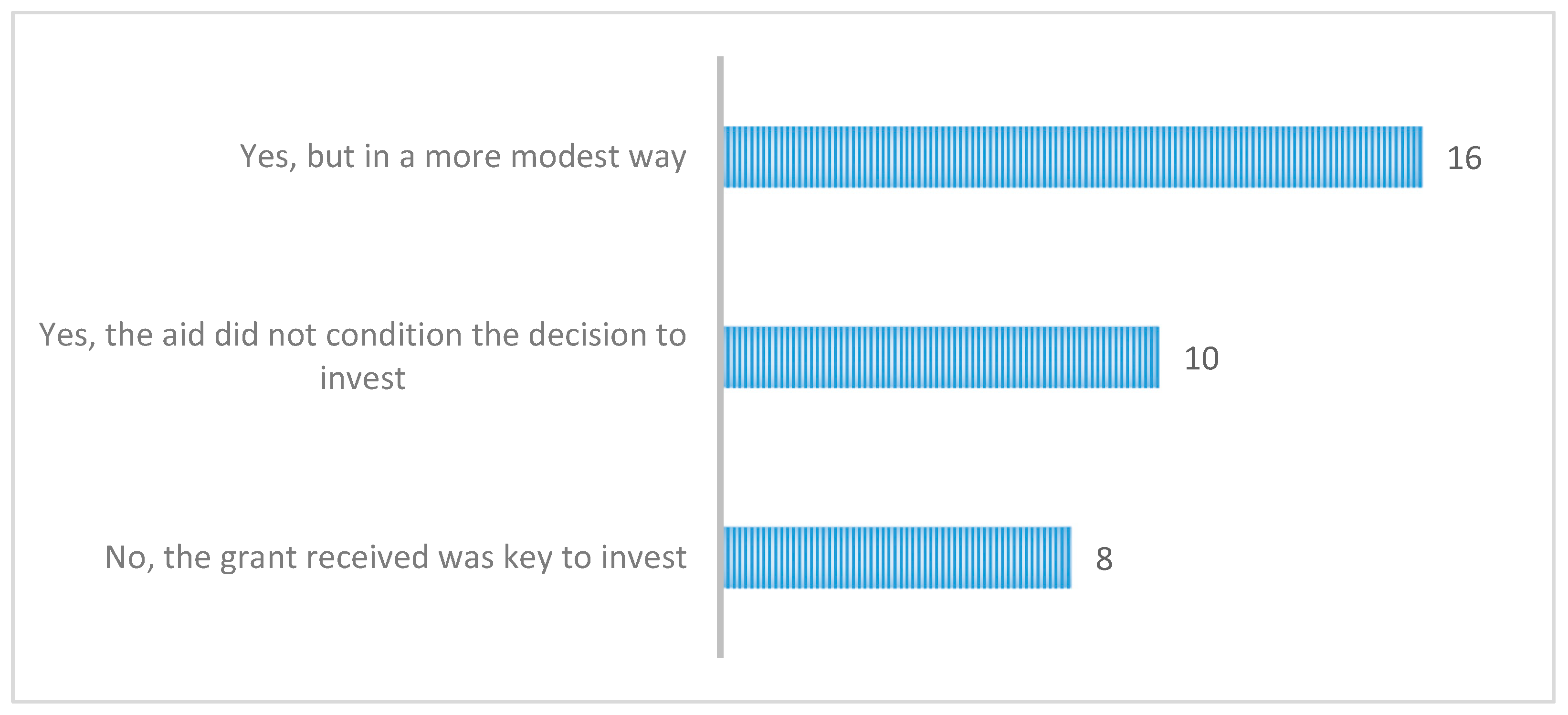
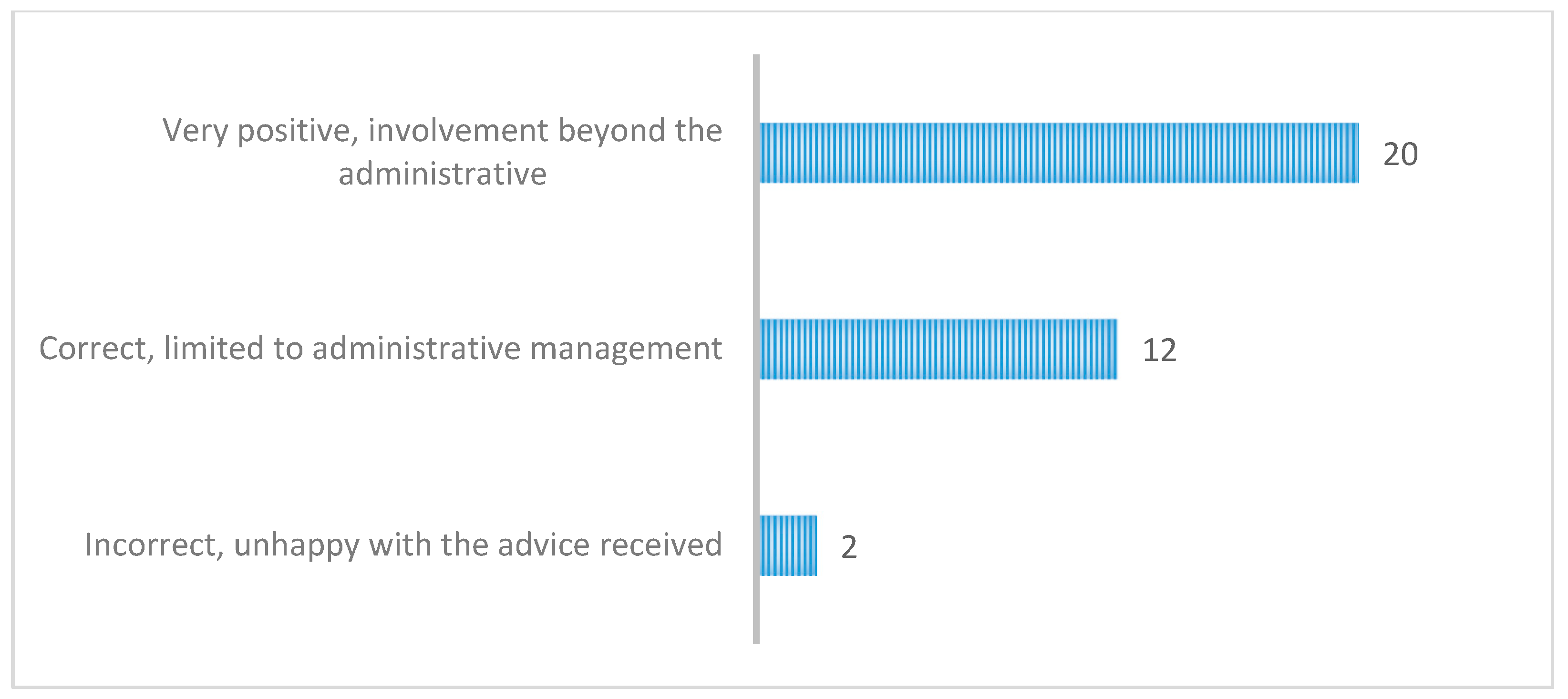
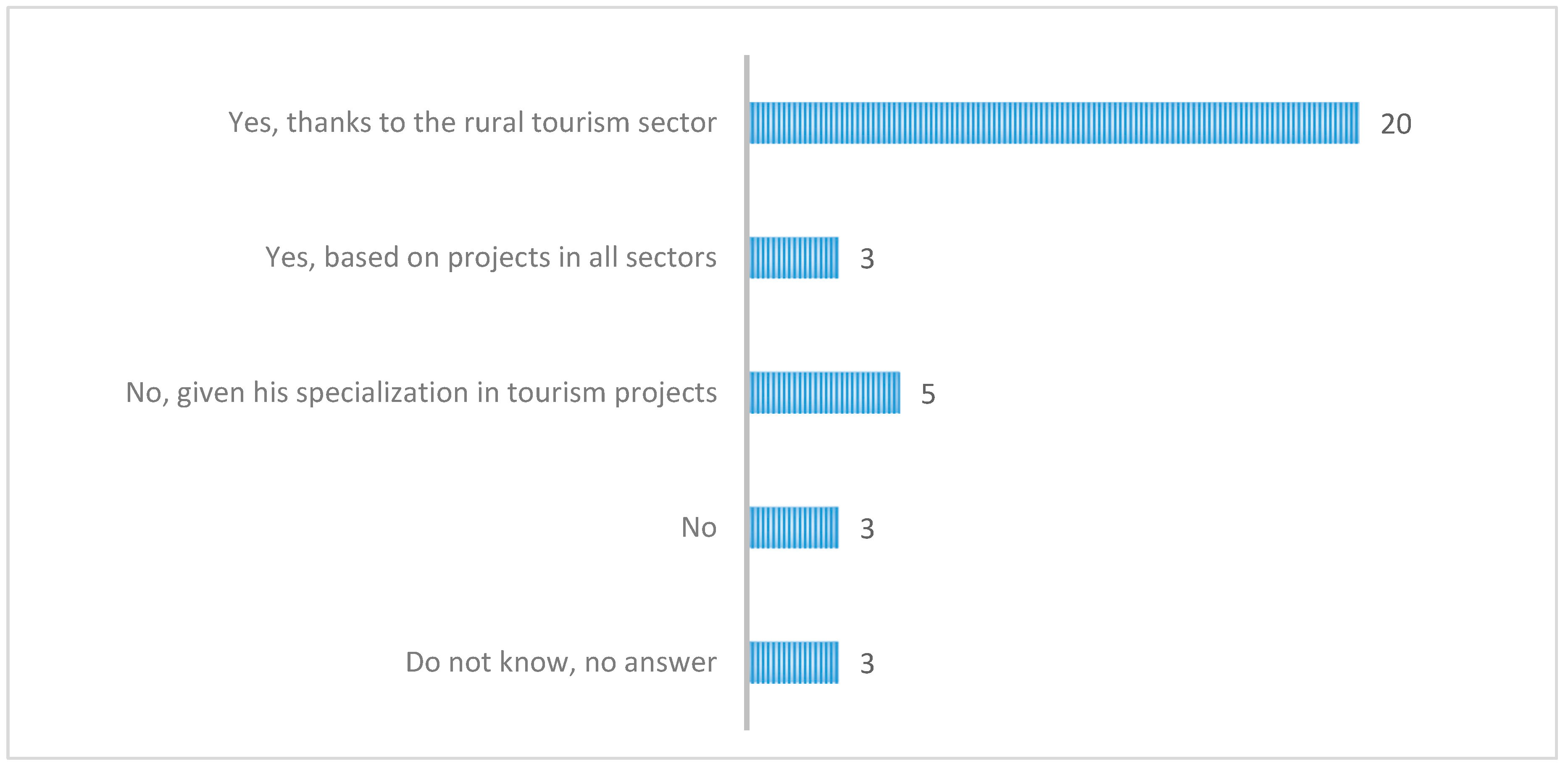
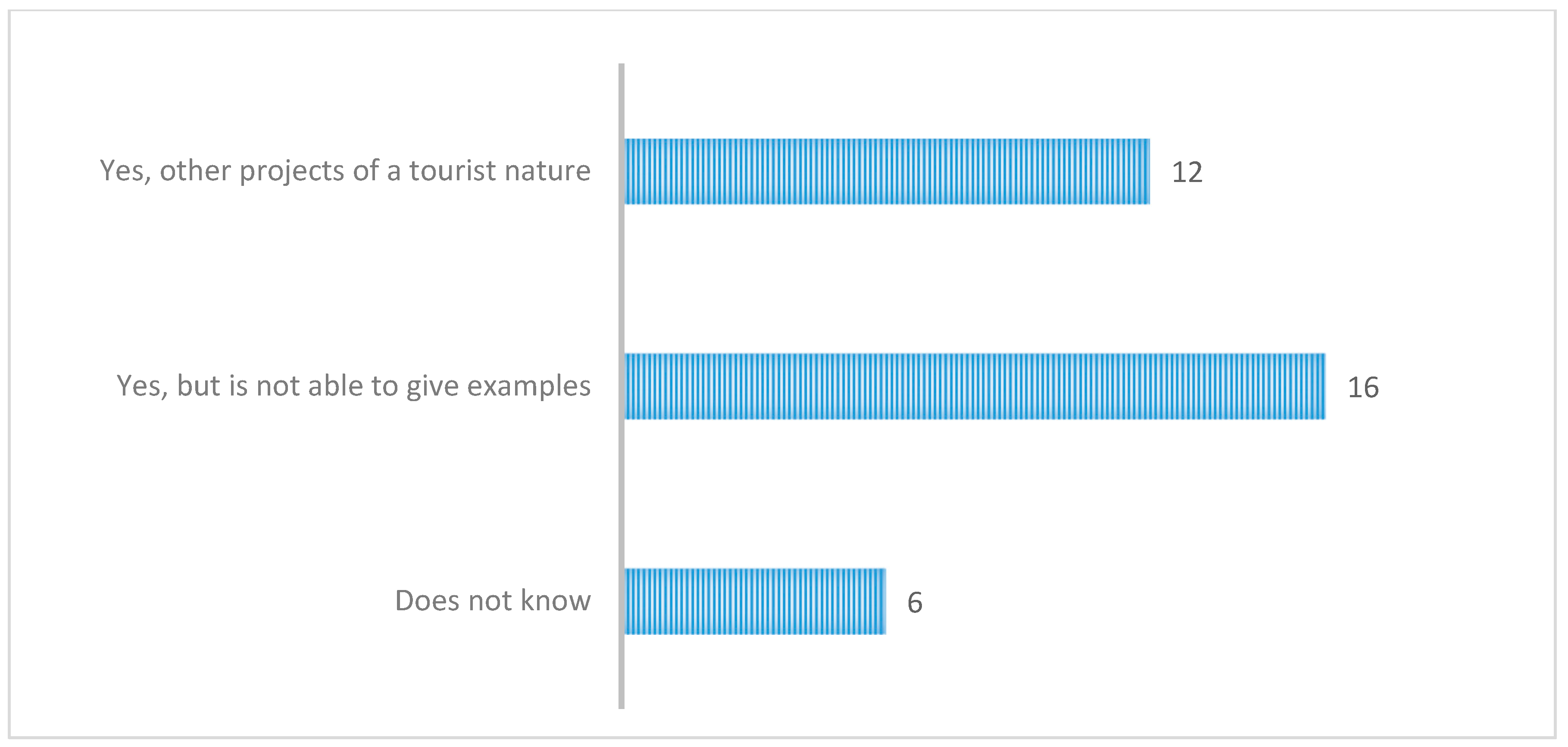
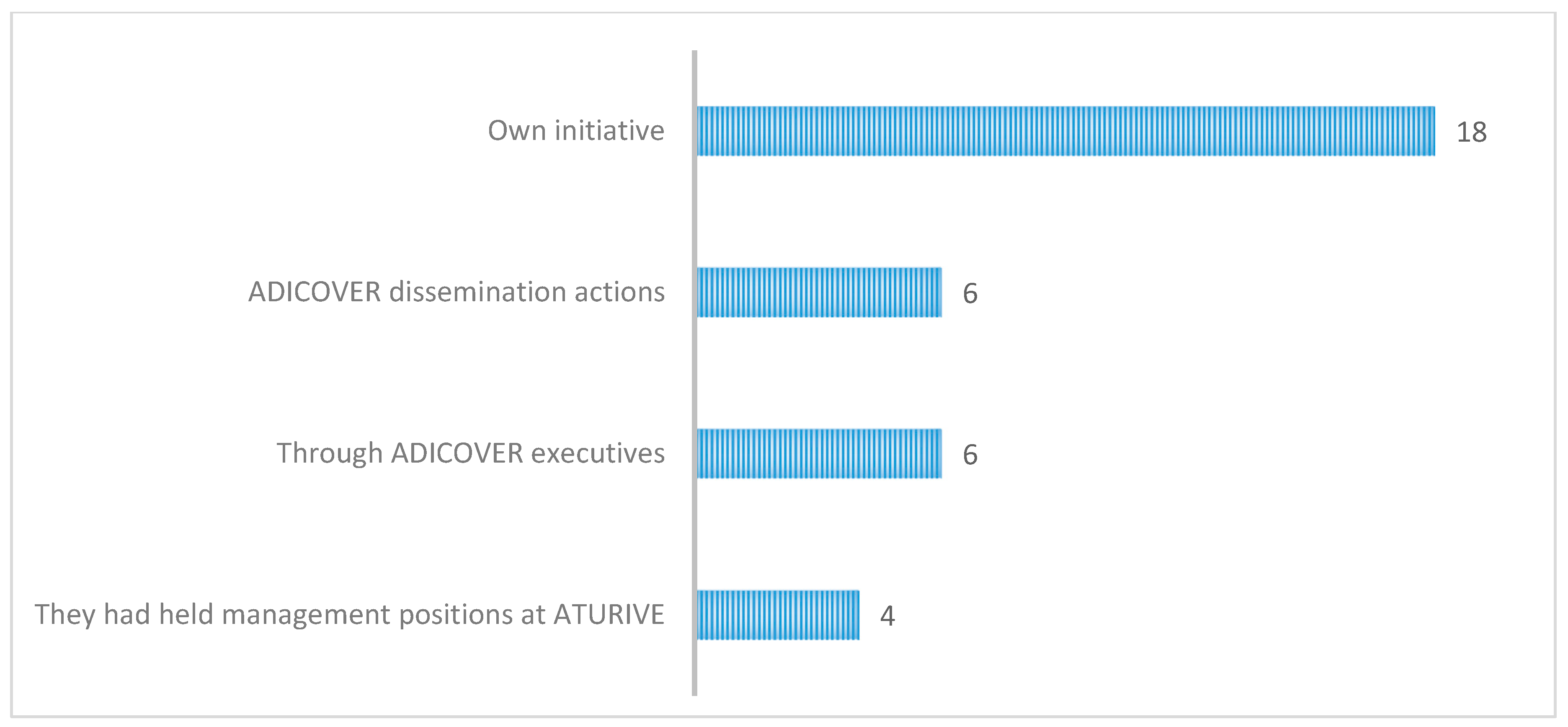
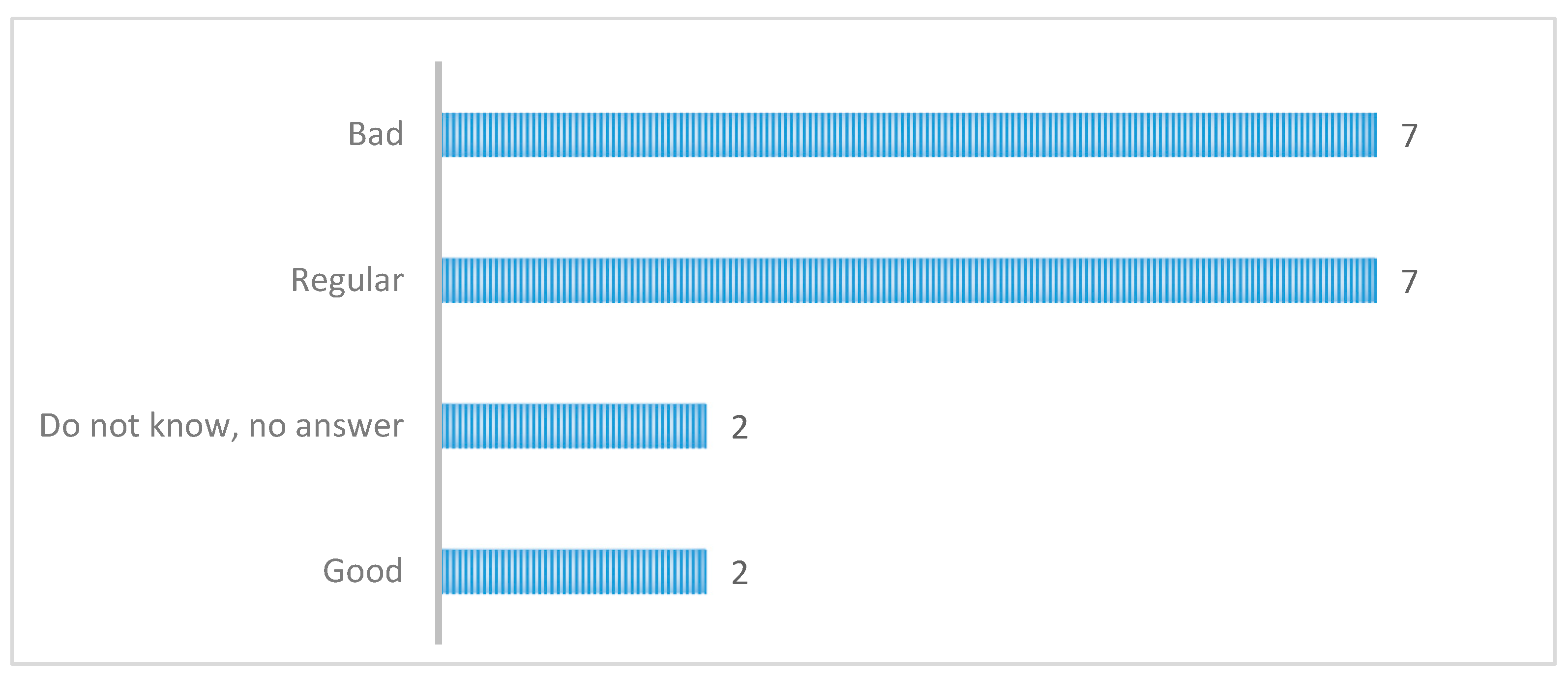

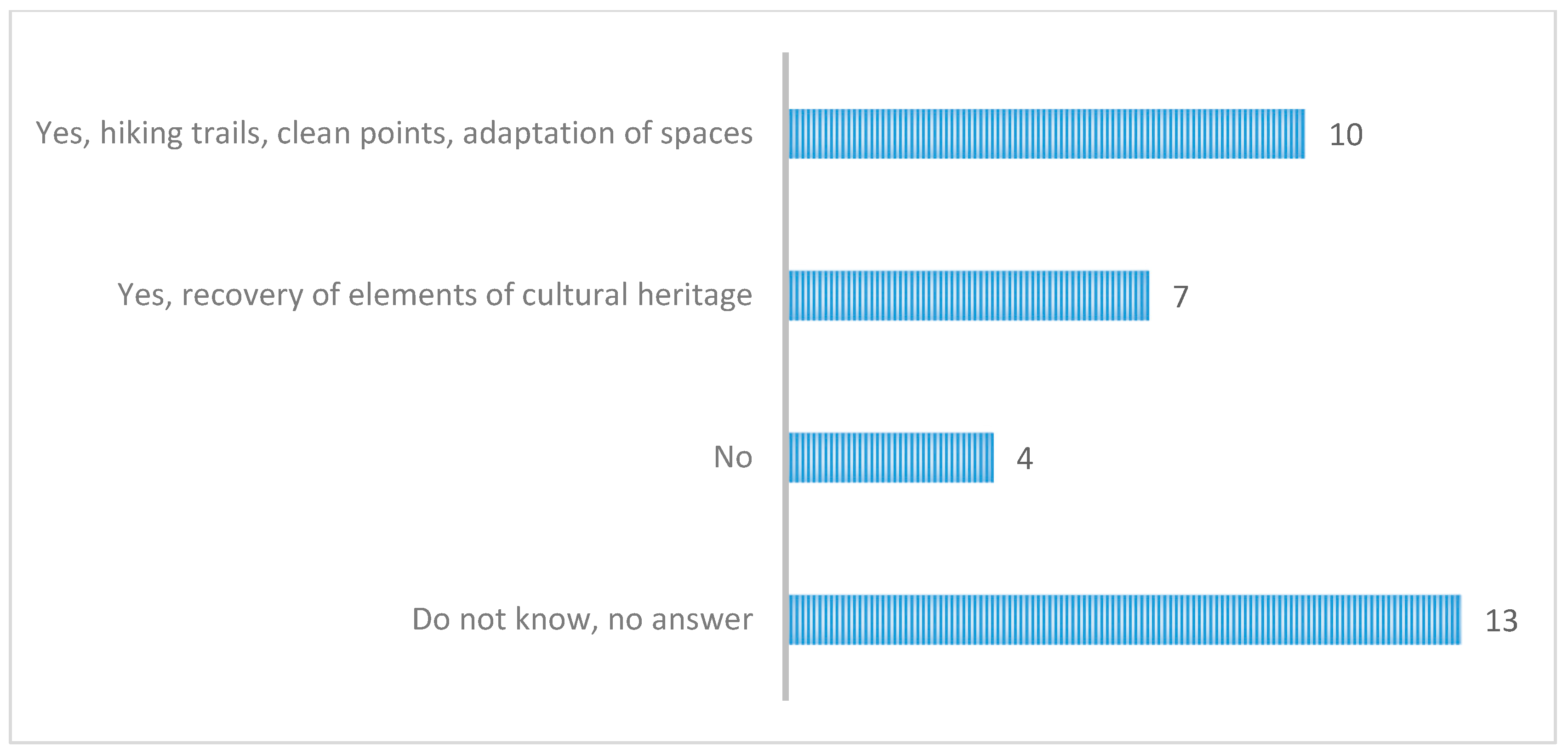
| Investment | Tourism | SMEs | Valorization | Total |
|---|---|---|---|---|
| Sample projects | 3,180,385,30 | 883,561,20 | 673,160,61 | 4,737,107,11 |
| Total implementation | 4,230,097,15 | 1,665,948,03 | 1,369,413,23 | 7,265,458,41 |
| % | 75.18% | 53.04% | 49.16% | 65.20% |
| Tourism | SMEs | Valorization | Total | |
|---|---|---|---|---|
| Sample projects | 24 | 12 | 8 | 44 |
| Failed projects | 5 | 2 | 7 | |
| Non-interview projects | 1 | 1 | 1 | 3 |
| Total conducted interviews | 18 | 9 | 7 | 34 |
© 2020 by the authors. Licensee MDPI, Basel, Switzerland. This article is an open access article distributed under the terms and conditions of the Creative Commons Attribution (CC BY) license (http://creativecommons.org/licenses/by/4.0/).
Share and Cite
Castellano-Álvarez, F.J.; Nieto Masot, A.; Castro-Serrano, J. Intangibles of Rural Development. The Case Study of La Vera (Extremadura, Spain). Land 2020, 9, 203. https://doi.org/10.3390/land9060203
Castellano-Álvarez FJ, Nieto Masot A, Castro-Serrano J. Intangibles of Rural Development. The Case Study of La Vera (Extremadura, Spain). Land. 2020; 9(6):203. https://doi.org/10.3390/land9060203
Chicago/Turabian StyleCastellano-Álvarez, Francisco J., Ana Nieto Masot, and José Castro-Serrano. 2020. "Intangibles of Rural Development. The Case Study of La Vera (Extremadura, Spain)" Land 9, no. 6: 203. https://doi.org/10.3390/land9060203





